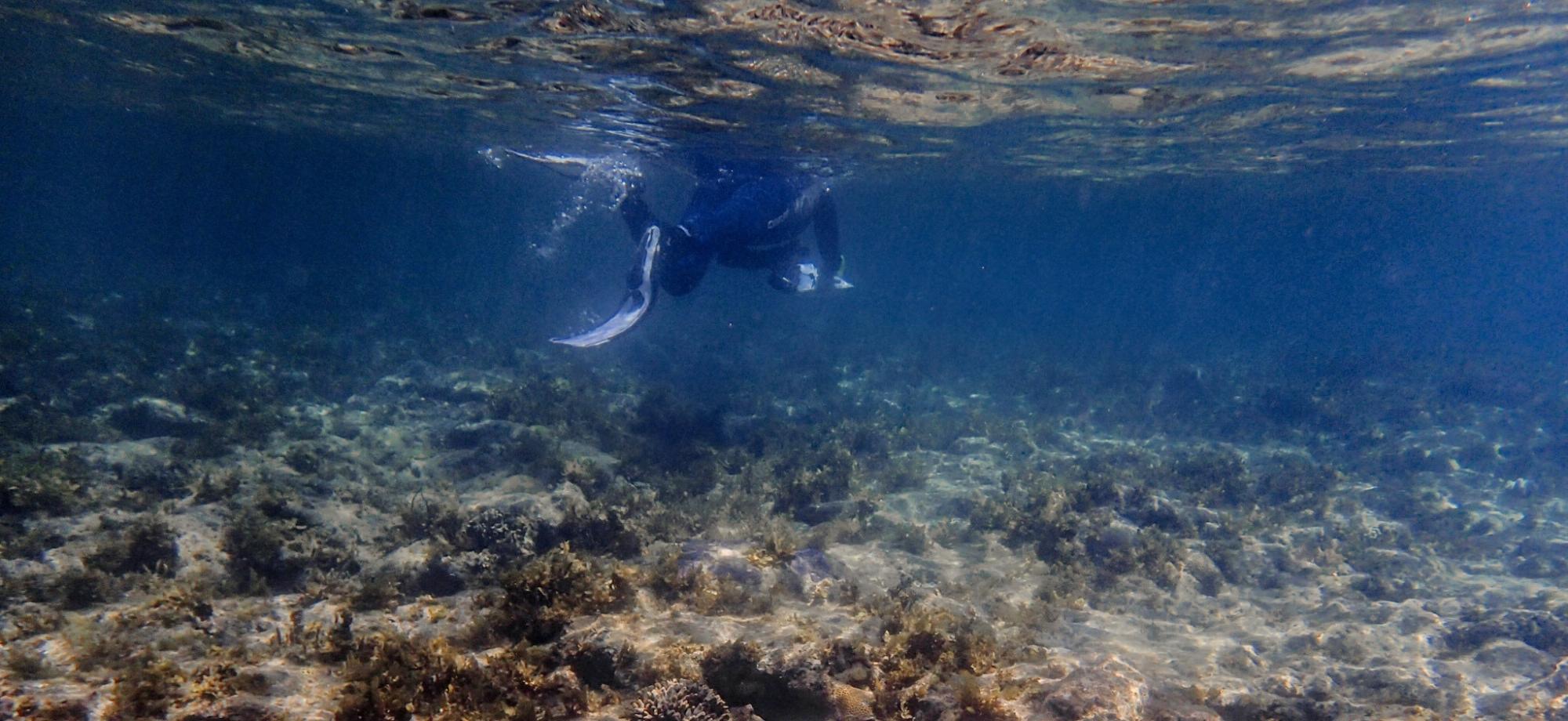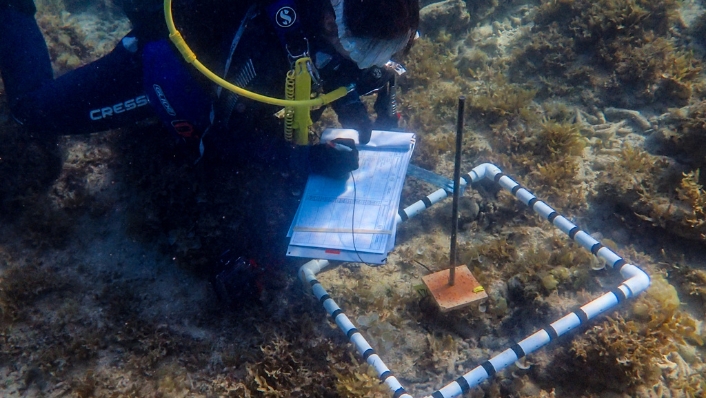Coral reefs face many connected pressures: rising temperatures, storms and cyclones, and poor water quality. On inshore reefs, one of the biggest challenges is the rapid growth of macroalgae. After a disturbance, corals can bleach and die, and their skeletons become new surfaces for macroalgae to colonise.
Fast-growing macroalgae (commonly known as “seaweeds”) compete with corals for light, space and nutrients. They can also trap sediment that smother young corals, release chemicals that slow coral growth, and promote microbes that increase coral stress or disease. For young corals this competition can be especially tough. Yet these early coral life stages are critical for reef recovery, so understanding what holds them back can inform coral reef restoration efforts.
To give baby corals a head start, AIMS scientists have developed coral seeding devices that house and protect them, helping them survive once they are deployed back onto the Great Barrier Reef. However, despite providing added protection, the effectiveness of these devices can still be impacted by surrounding macroalgal growth.
New research at AIMS will explore which traits of macroalgae make it difficult for young corals to survive and grow. This study will look at several factors, including: the amount of macroalgal cover, the distance between young corals and macroalgae, the height of macroalgae, and how many different types of seaweed are present.
The findings from this research will be incorporated into the AI models which are being developed to help scientists select the best locations and conditions to deploy these devices for effective reef restoration across the Reef.
Macroalgal experiments with corals spawned in 2025
During the 2025 spawning season, experiments will investigate the impacts of macroalgae on young corals in the Palm Islands, situated around 20km off the Australian mainland in the central Great Barrier Reef.
Prior to coral mass spawning in early November, AIMS scientists will place terracotta tiles at Falcon Reef across three different sites with a wide diversity of macroalgae. Coral larvae from wild spawning events will settle on these tiles, allowing researchers to study how different types of macroalgae influence natural coral settlement.
At the same time, corals collected in the Palm Islands will spawn and be reared at the National Sea Simulator (SeaSim). After several weeks, these juvenile corals will be placed into coral seeding devices and deployed back on the same reef. Scientists will monitor their growth and survival in the following weeks and months, to see how well these young corals cope with varying levels of macroalgae, and to determine whether macroalgal traits affect natural coral settlement differently from the survival of juveniles on coral seeding devices.
The findings from this research will help improve coral restoration strategies and contribute to rebuilding healthy, resilient inshore reefs on the Great Barrier Reef.
Researchers
Greta Zampa
Dr Carly Randall
Dr Muhammad Abdul Wahab
This research is supported by:
The Reef Restoration and Adaptation Program, funded by the partnership between the Australian Government's Reef Trust and the Great Barrier Reef Foundation.



